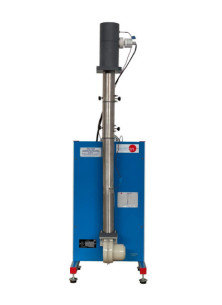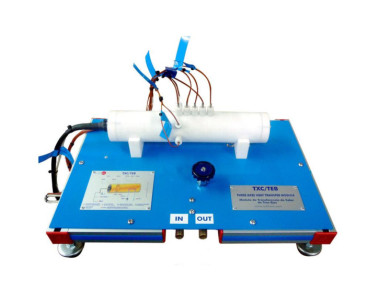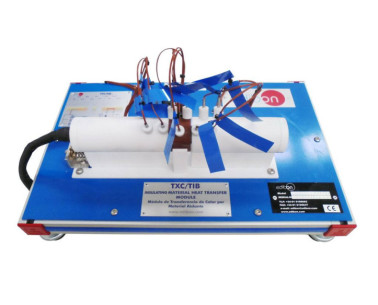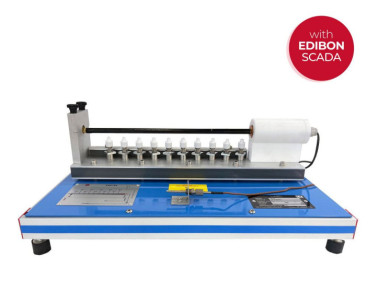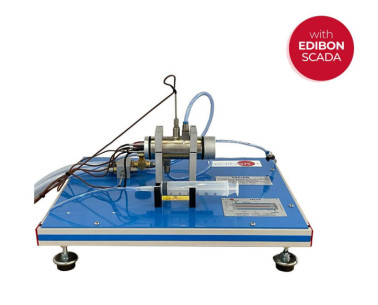The Heat Transfer Series, "TSTCB", has been designed by EDIBON to study and compare different types of heat transfer on a small scale.
It allows a wide range of heat transfer demonstrations and study the factors affecting and problems associated with different types of heattransfer.
The minimum supply consists of two main elements: Electronic Console for TSTCB (Common for all "TXC/..B" type modules), "TSTCB/EC",and at least one of the required elements described below.
Each heat transfer module can be individually connected to the Electronic Console for TSTCB (Common for all "TXC/..B" type modules)"TSTCB/EC", which provides the necessary electrical supply and instrumentation connections for the study of the different types of heattransfer.
Elements required (at least one) (Not included):
- TXC/CLB. Linear Heat Conduction Module for TSTCB.
- TXC/CRB. Radial Heat Conduction Module for TSTCB.
- TXC/RCB. Radiation Heat Transfer Module for TSTCB.
- TXC/CCB. Combined Free and Forced Convection and Radiation Module for TSTCB.
- TXC/SEB. Extended Surface Heat Transfer Module for TSTCB.
- TXC/ERB. Radiation Errors in Temperature Measurement Module for TSTCB.
- TXC/EIB. Unsteady State Heat Transfer Module for TSTCB.
- TXC/LGB. Thermal Conductivity of Liquids and Gases Module for TSTCB.
- TXC/FFB. Free and Forced Convection Heat Transfer Module for TSTCB.
- TXC/TEB. Three Axes Heat Transfer Module for TSTCB.
- TXC/MMB. Metal to Metal Heat Transfer Module for TSTCB.
- TXC/TCB. Ceramic Heat Transfer Module for TSTCB.
- TXC/TIB. Insulating Material Heat Transfer Module for TSTCB.
 Preferensi cookie
Preferensi cookie






